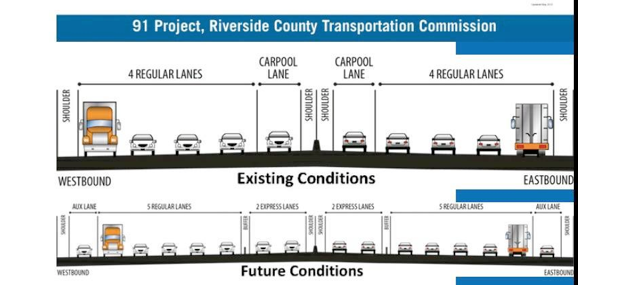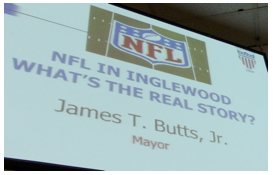Why Don’t Angelenos Trust Homegrown Talent?
CONNECTING CALIFORNA--Last week, Michelle King was appointed superintendent of LA Unified, California’s largest school district. But can we really trust her to lead the Los Angeles schools? After all, she’s from Los Angeles.
Actually, that understates how suspiciously local King is. As a child, she attended LA Unified schools. Then she got degrees from UCLA and Pepperdine (and is even now working on a doctorate at USC). She has spent her 30-year career in the LA school system, as a science teacher, principal, and top deputy to the last two superintendents. Heck, she even sent three children to LA schools.
If she were any good, wouldn’t she have lived or worked someplace else?
Is that a ridiculous question? Yes, but it mirrors much of the reaction in Los Angeles to her appointment. While politicians and interest groups released official statements full of praise, everyone from education professors to newspaper editorialists whispered their disappointment that LA Unified had hired someone so achingly local and low profile. One mover-and-shaker lamented to me that while there is a Michelle King on Wikipedia, it’s the co-creator of the TV drama The Good Wife.
This is supposed to be the era when we celebrate the local—local produce, local bookstores, local governance. But in Southern California, we’re not so excited about locally grown leaders. It’s the dark side of being a globally connected and welcoming place. We have for so long been a city of stars from someplace else that we have little faith in those boring grinds who are actually from here, painstakingly pay their dues and then have the temerity to think they might run things.
And so King, who probably knows LA Unified better than any living being, was labeled a disappointing fallback choice. Los Angeles elites had been hoping for a star from the outside—a political figure like the Obama cabinet member Julian Castro or a member of Congress who could transition into schools; or some gilded creature from the billionaire-backed reform movement; or a high-profile superintendent from a city like Miami or St. Louis—both of which, it should be noted, have far fewer residents than LA Unified has students.
Of course, Los Angeles’ contempt for its own is not new. Los Angeles’ locally grown police chief Charlie Beck, for all his progress in crime-fighting and diversifying his force, labors under the sense that he’s not in the same class of out-of-town predecessors. Once an internal candidate, always an internal candidate.
And no matter who you are, making the New York Times has always been a far bigger deal than getting written up in the Los Angeles Times—even before our local paper was downsized by out-of-town owners. And Hollywood has organized itself as an exclusive club that keeps regular Angelenos at a remove; even in 2016, the entertainment industry remains so distant from the diversity around it that it has turned the Academy Awards, with another slate of all-white acting nominees, into a national joke. When our movie stars do philanthropy, it’s more likely to be directed to South Sudan than South LA.
Los Angeles also has a nasty habit of outsourcing thorny problems: When our big institutions get into trouble, we don’t knuckle down and fix them ourselves. We bring in outsiders to fix them. Over the past generation, our sheriff’s department, police department, the Dodgers, and elements of our transportation and school district have had to be taken over, or put under trustees. “Too much of the city has been taken into receivership,” the author D.J. Waldie has written of LA.
I’ve experienced LA self-contempt personally. When a source or friend is introducing me to some powerful LA figure, I’m struck at how little access my years of journalistic work in Southern California buy—and at how many doors suddenly swing open when it’s mentioned that I went to college at Harvard.
This is supposed to be the era when we celebrate the local—local produce, local bookstores, local governance. But in Southern California, we’re not so excited about locally grown leaders.
In this context, the reaction to King’s appointment, while frustrating, is hardly surprising. You could argue that she’s the best prepared LA Unified leader in a long time—having been a success as teacher, principal, and administrator, most recently as a top aide to the past two superintendents. Her expertise ranges from science education, to instructional reform, to student discipline. And she’s hardly following giants; the district has had eight superintendents in 20 years, many of them outsiders, including a Navy admiral who had little idea what he was doing.
And while elites don’t know her well—she was presumably too busy working to write lots of op-eds and give speeches—regular people in LA schools do. As the LA School Report site pointed out, King was far and away the most frequently mentioned person in the district’s online survey of what kind of new superintendent parents, staff, and teachers would want.
This community support, however, counted as a strike against her in editorials by the Los Angeles Times and LA Daily News after her appointment. Both papers damned her credentials with faint praise (the Times editorial called her “obviously capable” twice) and advised her to pick fights and make enemies—the kind of tactics that backfired on her predecessor and former boss, John Deasy. The only thing more condescending than the editorials was a column in which the Times’ Steve Lopez said the school board “decided on someone who has been a good, low-profile soldier rather than a strong, independent voice, and for now at least, I find that disappointing.”
And I find Lopez’s notion that a good local can’t be strong and independent to be maddening. And out of touch.
The reality is that, with all our diversity and strange ways of governance (from ballot initiatives to our hundreds of regulatory commissions), California’s institutions are getting more complicated—making it harder for outsiders to step in. And with all of LA Unified’s challenges, from its hundreds of thousands of poor students to its big projected deficits, there may be no California government more complicated and important.
In other school districts, local leaders or those elevated from the ranks have succeeded. There may be no better big-city school district in the state than Long Beach, run for the last 14 years by Chris Steinhauser, who was both student and teacher in the schools he leads. In San Francisco, Richard Carranza, who was the top deputy of his predecessor, has done so well that LA Unified sought to recruit him before choosing King.
At San Diego Unified, Cindy Marten, a local elementary school principal elevated to superintendent three years ago, has made some political mistakes but also has pleasantly surprised many with dramatic changes to culture, training, and personnel, including the replacement of more than 70 principals and vice principals.
Of course, LA Unified presents a bigger challenge. Which is precisely why a woman tough enough to negotiate the LA district as parent, teacher, and administrator for 30 years stands a better chance of succeeding than just about anyone else.
(Joe Mathews is Connecting California Columnist and Editor, Zócalo Public Square, Fellow at the Center for Social Cohesion at Arizona State University and co-author of California Crackup: How Reform Broke the Golden State and How We Can Fix It [UC Press, 2010]. This column was posted first at Zocalo Public Square … connecting people and ideas.)
-cw
CityWatch
Vol 14 Issue 7
Pub: Jan 22, 2016





 Kroenke will benefit not only from his investment in the Inglewood entertainment complex, but also from the increase in the value of the Los Angeles Rams (v. the St. Louis Rams) over and above the $550 million relocation fee that the NFL will extract from the team.
Kroenke will benefit not only from his investment in the Inglewood entertainment complex, but also from the increase in the value of the Los Angeles Rams (v. the St. Louis Rams) over and above the $550 million relocation fee that the NFL will extract from the team. 




 Riordan cautions against placing too much zoning control in the hands of single council members. “That person is being lobbied by the developers and getting campaign money or campaign promises and this just has to end,” he warns. (Photo right: So-called Palladium Project that prompted the ballot measure.)
Riordan cautions against placing too much zoning control in the hands of single council members. “That person is being lobbied by the developers and getting campaign money or campaign promises and this just has to end,” he warns. (Photo right: So-called Palladium Project that prompted the ballot measure.) 










 The Latino community has been Sifuentes’ home and Patel asked him about his particular interest in LA’s Latino community. Since he grew up with young parents, he spent a lot of time with his grandparents. For him, photographing streets in LA is a nostalgic act – he used to walk on Cesar Chavez Avenue and Grand Central Market with his grandmother. (Photo left: George Sifuentes)
The Latino community has been Sifuentes’ home and Patel asked him about his particular interest in LA’s Latino community. Since he grew up with young parents, he spent a lot of time with his grandparents. For him, photographing streets in LA is a nostalgic act – he used to walk on Cesar Chavez Avenue and Grand Central Market with his grandmother. (Photo left: George Sifuentes) 


 City council meetings are telecast for one reason--to afford all Angelenos (regardless of work schedule, car ownership, geographic proximity to City Hall, ability to pay for daycare, or any other factor) the opportunity to observe those meetings and so have a clean shot at being a fully-informed citizen.
City council meetings are telecast for one reason--to afford all Angelenos (regardless of work schedule, car ownership, geographic proximity to City Hall, ability to pay for daycare, or any other factor) the opportunity to observe those meetings and so have a clean shot at being a fully-informed citizen. 















